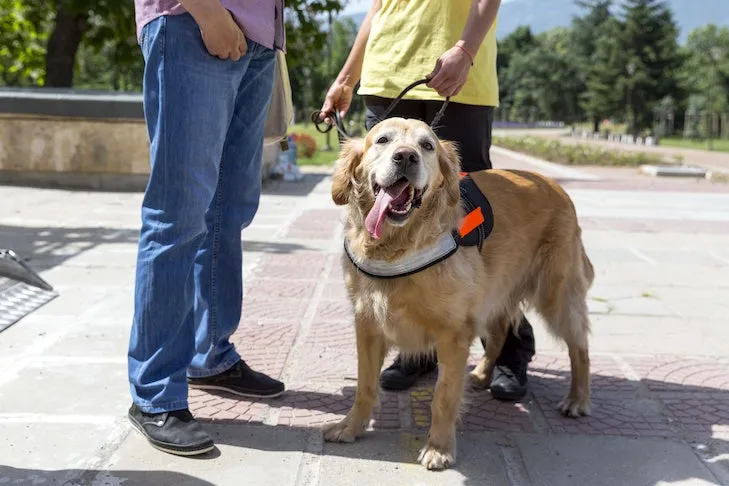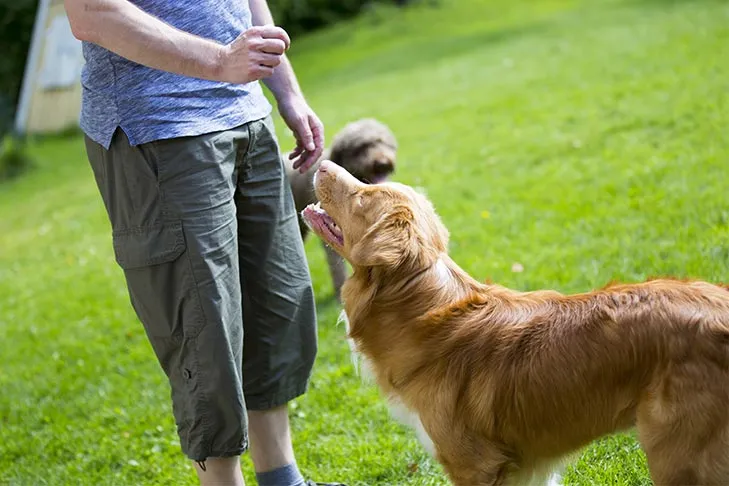Dogs enrich our lives in countless ways, serving as loyal companions and sometimes, much more. For individuals with disabilities, specially trained service dogs offer unparalleled independence and support, performing specific tasks that mitigate the challenges of daily life. The role of service dogs has expanded significantly over the past decade, yet a clear understanding of their training, functions, and public access rights remains crucial for both the public and those considering welcoming one into their lives. This guide will delve into what defines a service dog, the characteristics that make a suitable candidate, and the pathways available for training your own service dog, ensuring you can foster a truly remarkable and well-behaved companion.
The benefits service dogs provide continue to evolve. Historically, service dogs, such as guide dogs for individuals with visual or hearing impairments, were often German Shepherd Dogs. Today, a diverse range of breeds perform an extensive array of tasks for disabled individuals, highlighting the versatility and adaptability of these incredible animals.
Understanding What a Service Dog Is
At its core, a service dog is a highly trained animal dedicated to assisting a person with a disability, enabling them to lead a more independent life. The Americans with Disabilities Act (ADA) defines a service dog as “a dog that is individually trained to do work or perform tasks for a person with a disability.” A “disability” under the ADA refers to a physical or mental impairment that substantially limits one or more major life activities. The tasks performed by a service dog must be directly related to the individual’s disability.
These tasks are incredibly varied and specialized. Guide dogs, for instance, help blind and visually impaired individuals navigate their environments safely. Hearing dogs alert deaf and hard-of-hearing individuals to critical sounds, such as doorbells or alarms. Mobility dogs provide support for those using wheelchairs, walking devices, or experiencing balance issues. Medical alert dogs can signal the onset of a medical episode, like a seizure or low blood sugar, or alert to the presence of allergens. Psychiatric service dogs assist individuals with conditions such as obsessive-compulsive disorder or post-traumatic stress disorder, performing tasks like interrupting repetitive behaviors or reminding them to take medication. It’s important to recognize that service dogs are considered working animals first and foremost, not merely pets.
Choosing the Right Breed and Temperament
The selection of a service dog breed is not one-size-fits-all; it largely depends on the specific tasks the dog needs to perform. For example, a small Papillon might excel as a hearing dog due to its alertness, but it wouldn’t be suitable for tasks requiring significant strength, like pulling a wheelchair. In contrast, larger breeds such as Great Danes, Saint Bernards, and Bernese Mountain Dogs possess the stature and power necessary for mobility assistance.
Poodles, available in Toy, Miniature, and Standard varieties, are exceptionally versatile. A Toy Poodle puppy can begin early scent training for blood sugar alerts, while a Standard Poodle can learn to operate light switches or carry objects. Labrador Retrievers, Golden Retrievers, and German Shepherd Dogs are frequently chosen as guide dogs due to their intelligence, trainability, and calm demeanors. Organizations like Canine Companions and NEADS World Class Service Dogs maintain rigorous breeding programs to ensure consistent temperament, trainability, and health in their service dog candidates. They focus on dogs that are handler-focused, desensitized to distractions, and highly reliable in performing their tasks, regardless of the breed or mix.
 A service dog with its handler walking through a public space, illustrating the bond and assistance provided.
A service dog with its handler walking through a public space, illustrating the bond and assistance provided.
Ultimately, the best service dogs exhibit a calm disposition, a willingness to please, and the ability to focus intently on their owner even amidst various distractions in public settings. They remain attentive and responsive, embodying the dedication required for their vital roles. These qualities are often developed through careful breeding and extensive early socialization to ensure they can confidently navigate diverse environments and social interactions.
Differentiating Service Dogs from Other Assistance Animals
A common misunderstanding surrounds the identification of service dogs. While some may wear vests or special harnesses, the ADA does not legally mandate any specific attire or identification for service dogs. Conversely, many dogs wearing “service animal” vests are not, in fact, service dogs under the ADA. This distinction is crucial when considering Emotional Support Animals (ESAs), Therapy Dogs, and Courthouse Dogs.
Emotional Support Animals (ESAs) provide comfort simply through their presence. However, because ESAs are not trained to perform specific tasks directly related to an individual’s disability, they do not qualify as service dogs under the ADA. For example, if a dog is trained to sense an anxiety attack and perform a specific action to mitigate it, it’s a psychiatric service dog. If its mere presence provides comfort, it’s an ESA. ESAs generally do not have public access rights under the ADA, though some state and local laws may offer limited access, and they may qualify for certain housing accommodations.
 A Labrador Retriever service dog guiding a blind man through a park in autumn, demonstrating essential assistance.
A Labrador Retriever service dog guiding a blind man through a park in autumn, demonstrating essential assistance.
Therapy dogs offer affection and interaction in various settings on a volunteer basis, bringing comfort to hospital patients, assisted living residents, or stressed students. Like ESAs, therapy dogs are not defined as service dogs by the ADA and do not have public access rights, special housing accommodations, or special cabin access on commercial flights. Courthouse dogs, used to accompany vulnerable individuals during trial proceedings, are another category that sometimes wears identification but are not service dogs and are not protected under the ADA. Understanding these distinctions helps the public and handlers respect the specific roles and rights of each type of animal, and helps service dog owners manage jumping behavior and other common canine behaviors in public settings.
Where to Find a Service Dog
For those seeking a trained service dog, numerous professional organizations and individual trainers across the U.S. specialize in this field. These experts train dogs to perform tasks tailored to a handler’s specific disability and also instill crucial public access skills, such as appropriate behavior in public spaces and remaining focused on the handler.
The training process for service dogs is extensive, leading to high drop-out rates—often between 50% and 70%—for candidates that don’t meet the rigorous standards. The cost of acquiring a professionally trained service dog can exceed $25,000, often including handler training and follow-up sessions. However, both non-profit and for-profit organizations exist, with some non-profits providing dogs at no cost or offering financial aid. It is highly recommended to work with experienced, reputable organizations or trainers, thoroughly vetting them before making a significant investment of time or money.
How to Train Your Own Service Dog: A Step-by-Step Approach
The ADA explicitly states that individuals with disabilities have the right to train their own service dogs and are not required to use professional trainers or programs. This pathway offers flexibility but demands significant commitment and understanding of proper training methodologies. The journey to train your dog to be a service dog begins with selecting a suitable candidate and building a strong foundation.
A prospective service dog candidate should exhibit specific traits: they must be calm, particularly in unfamiliar environments, alert but not reactive, eager to please, capable of learning and retaining information, and able to be thoroughly socialized across diverse situations. Reliability in performing repetitive tasks is also paramount.
 A Golden Retriever service dog calmly waiting while people converse outdoors, showcasing its disciplined nature.
A Golden Retriever service dog calmly waiting while people converse outdoors, showcasing its disciplined nature.
Begin with foundational skills. This includes comprehensive house training, teaching the dog to eliminate waste on command in various locations. Extensive socialization is critical, aiming for the dog to remain on task and focused on the handler despite the presence of unfamiliar people, places, sights, sounds, scents, and other animals. Teaching the dog an effective recall and to ignore distractions is vital for safety and effective work.
Programs like the AKC Canine Good Citizen provide excellent guidelines for establishing these foundational skills. Resources such as the “Confident Puppy” e-learning course also offer valuable insights into raising working dog puppies. Beyond basic obedience and socialization, a service dog must be trained to perform specific tasks directly related to the handler’s disability. This specialized training involves teaching new tricks or actions that provide tangible assistance, from retrieving dropped items to alerting to medical changes. When a service animal’s role is not obvious, ADA rules allow only two questions to be asked: “Is the dog a service animal required because of a disability?” and “What work or task has the dog been trained to perform?” The reply to the second question must confirm specific, trained actions to assist the person with a disability.
 A Nova Scotia Duck Tolling Retriever undergoing training in a park, illustrating a focused learning session.
A Nova Scotia Duck Tolling Retriever undergoing training in a park, illustrating a focused learning session.
The Issue of Fake Service Dogs and Legal Implications
The special accommodations provided by federal laws for individuals with disabilities have unfortunately led to an increase in fraudulent misrepresentation of pets as service animals. This practice not only harms truly disabled individuals and confuses the public but also damages the reputation of legitimate service dog users. More critically, a poorly trained “fake” service animal can pose a danger to the public and to actual working service dogs.
In response, organizations like the American Kennel Club (AKC) have issued policy statements, such as “Misuse of Service Dogs,” to address this growing problem. Many state and local governments have also enacted laws making it an offense to misrepresent a service animal. Initiatives like “CGC Plus,” developed by the Association of Service Dog Providers for Military Veterans, establish minimum training and behavior standards, mandating that dogs pass AKC Canine Good Citizen, Community Canine, and Urban CGC tests, along with demonstrating proficiency in specific services.
 Service Dog "Tuesday," a Golden Retriever, owned by Capt. Luis Carlos Montalván of New York, New York.
Service Dog "Tuesday," a Golden Retriever, owned by Capt. Luis Carlos Montalván of New York, New York.
The AKC also collaborates with the American Service Dog Access Coalition (ASDAC) to improve access for legitimate service dog teams and educate the public about service dog fraud. ASDAC is developing the “Service Dog Pass (SDP)” credentialing system to streamline air travel and assist gatekeepers in easily identifying valid, well-trained service dogs.
Service dogs are far more than just pets or companions. Their essential work profoundly enhances the independence and quality of life for children and adults navigating physical, cognitive, and developmental disabilities. Understanding their role, respecting their training, and upholding the integrity of service animal laws are critical steps in supporting the thousands of individuals who rely on these exceptional animals every day.
